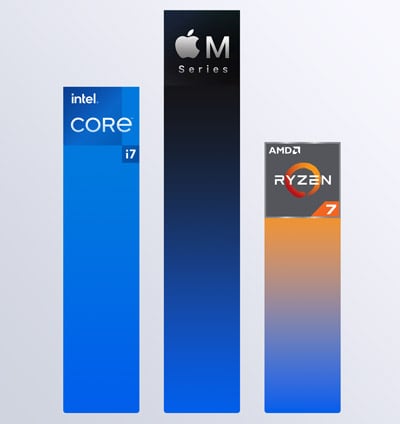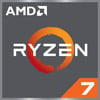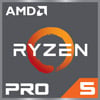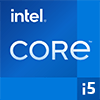
AMD Ryzen 5 5600G vs Intel Core i5-10400
Last updated:
CPU comparison with benchmarks
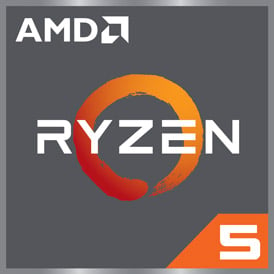
|
 |
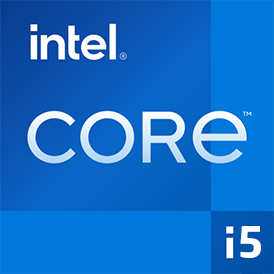
|
| AMD Ryzen 5 5600G | Intel Core i5-10400 | |
CPU comparisonIn this CPU comparison, we compare the AMD Ryzen 5 5600G and the Intel Core i5-10400 and use benchmarks to check which processor is faster.
We compare the AMD Ryzen 5 5600G 6 core processor released in Q2/2021 with the Intel Core i5-10400 which has 6 CPU cores and was introduced in Q2/2020. |
||
| AMD Ryzen 5 (84) | Family | Intel Core i5 (331) |
| AMD Ryzen 5000G (16) | CPU group | Intel Core i 10000 (43) |
| 4 | Generation | 10 |
| Cezanne (Zen 3) | Architecture | Comet Lake S |
| Desktop / Server | Segment | Desktop / Server |
| AMD Ryzen 5 4600G | Predecessor | Intel Core i5-9400 |
| AMD Ryzen 5 8600G | Successor | Intel Core i5-11400 |
|
|
||
CPU Cores and Base FrequencyThe AMD Ryzen 5 5600G is a 6 core processor with a clock frequency of 3.90 GHz (4.40 GHz). The processor can compute 12 threads at the same time. The Intel Core i5-10400 clocks with 2.90 GHz (4.30 GHz), has 6 CPU cores and can calculate 12 threads in parallel. |
||
| AMD Ryzen 5 5600G | Characteristic | Intel Core i5-10400 |
| 6 | Cores | 6 |
| 12 | Threads | 12 |
| normal | Core architecture | normal |
| Yes | Hyperthreading | Yes |
| Yes | Overclocking ? | No |
| 3.90 GHz | Frequency | 2.90 GHz |
| 4.40 GHz | Turbo Frequency (1 Core) | 4.30 GHz |
| 4.20 GHz | Turbo Frequency (All Cores) | 4.00 GHz |
Internal GraphicsGraphics (iGPU) integrated into the processor not only enable image output without having to rely on a dedicated graphics solution, but can also efficiently accelerate video playback. |
||
| AMD Radeon RX Vega 7 (Renoir) | GPU | Intel UHD Graphics 630 |
| 0.40 GHz | GPU frequency | 0.35 GHz |
| 1.90 GHz | GPU (Turbo) | 1.20 GHz |
| 9 | GPU Generation | 9.5 |
| 7 nm | Technology | 14 nm |
| 3 | Max. displays | 3 |
| 7 | Compute units | 24 |
| 448 | Shader | 192 |
| No | Hardware Raytracing | No |
| No | Frame Generation | No |
| 2 GB | Max. GPU Memory | 64 GB |
| 12 | DirectX Version | 12 |
Hardware codec supportA photo or video codec that is accelerated in hardware can greatly accelerate the working speed of a processor and extend the battery life of notebooks or smartphones when playing videos. |
||
| AMD Radeon RX Vega 7 (Renoir) | GPU | Intel UHD Graphics 630 |
| Decode / Encode | Codec h265 / HEVC (8 bit) | Decode / Encode |
| Decode / Encode | Codec h265 / HEVC (10 bit) | Decode / Encode |
| Decode / Encode | Codec h264 | Decode / Encode |
| Decode / Encode | Codec VP9 | Decode / Encode |
| Decode / Encode | Codec VP8 | Decode / Encode |
| No | Codec AV1 | No |
| Decode / Encode | Codec AVC | Decode / Encode |
| Decode | Codec VC-1 | Decode |
| Decode / Encode | Codec JPEG | Decode / Encode |
Memory & PCIeUp to 64 GB of memory in a maximum of 2 memory channels is supported by the AMD Ryzen 5 5600G, while the Intel Core i5-10400 supports a maximum of 128 GB of memory with a maximum memory bandwidth of 42.7 GB/s enabled. |
||
| AMD Ryzen 5 5600G | Characteristic | Intel Core i5-10400 |
| DDR4-3200 | Memory | DDR4-2666 |
| 64 GB | Max. Memory | 128 GB |
| 2 (Dual Channel) | Memory channels | 2 (Dual Channel) |
| 51.2 GB/s | Max. Bandwidth | 42.7 GB/s |
| No | ECC | No |
| 3.00 MB | L2 Cache | -- |
| 16.00 MB | L3 Cache | 12.00 MB |
| 3.0 | PCIe version | 3.0 |
| 20 | PCIe lanes | 16 |
| 19.7 GB/s | PCIe Bandwidth | 15.8 GB/s |
Thermal ManagementThe AMD Ryzen 5 5600G has a TDP of 65 W. The TDP of the Intel Core i5-10400 is 65 W. System integrators use the TDP of the processor as a guide when dimensioning the cooling solution. |
||
| AMD Ryzen 5 5600G | Characteristic | Intel Core i5-10400 |
| 65 W | TDP (PL1 / PBP) | 65 W |
| -- | TDP (PL2) | -- |
| 88 W | TDP up | -- |
| 45 W | TDP down | -- |
| 95 °C | Tjunction max. | 100 °C |
Technical detailsThe AMD Ryzen 5 5600G has 19.00 MB cache and is manufactured in 7 nm. The cache of Intel Core i5-10400 is at 12.00 MB. The processor is manufactured in 14 nm. |
||
| AMD Ryzen 5 5600G | Characteristic | Intel Core i5-10400 |
| 7 nm | Technology | 14 nm |
| Monolithic | Chip design | Monolithic |
| x86-64 (64 bit) | Instruction set (ISA) | x86-64 (64 bit) |
| SSE4a, SSE4.1, SSE4.2, AVX2, FMA3 | ISA extensions | SSE4.1, SSE4.2, AVX2 |
| AM4 (PGA 1331) | Socket | LGA 1200 |
| AMD-V, SVM | Virtualization | VT-x, VT-x EPT, VT-d |
| Yes | AES-NI | Yes |
| Windows 10, Windows 11, Linux | Operating systems | Windows 10, Windows 11, Linux |
| Q2/2021 | Release date | Q2/2020 |
| -- | Release price | 182 $ |
| show more data | show more data | |
Rate these processors
Average performance in benchmarks
⌀ Single core performance in 6 CPU benchmarks
⌀ Multi core performance in 8 CPU benchmarks
Cinebench 2024 (Single-Core)
The Cinebench 2024 benchmark is based on the Redshift rendering engine, which is also used in Maxon's 3D program Cinema 4D. The benchmark runs are each 10 minutes long to test whether the processor is limited by its heat generation.
|
|
AMD Ryzen 5 5600G
6C 12T @ 4.40 GHz |
||
|
|
Intel Core i5-10400
6C 12T @ 4.30 GHz |
||
Cinebench 2024 (Multi-Core)
The Multi-Core test of the Cinebench 2024 benchmark uses all cpu cores to render using the Redshift rendering engine, which is also used in Maxons Cinema 4D. The benchmark run is 10 minutes long to test whether the processor is limited by its heat generation.
|
|
AMD Ryzen 5 5600G
6C 12T @ 4.40 GHz |
||
|
|
Intel Core i5-10400
6C 12T @ 4.30 GHz |
||
Cinebench R23 (Single-Core)
Cinebench R23 is the successor of Cinebench R20 and is also based on the Cinema 4 Suite. Cinema 4 is a worldwide used software to create 3D forms. The single-core test only uses one CPU core, the amount of cores or hyperthreading ability doesn't count.
|
|
AMD Ryzen 5 5600G
6C 12T @ 4.40 GHz |
||
|
|
Intel Core i5-10400
6C 12T @ 4.30 GHz |
||
Cinebench R23 (Multi-Core)
Cinebench R23 is the successor of Cinebench R20 and is also based on the Cinema 4 Suite. Cinema 4 is a worldwide used software to create 3D forms. The multi-core test involves all CPU cores and taks a big advantage of hyperthreading.
|
|
AMD Ryzen 5 5600G
6C 12T @ 4.20 GHz |
||
|
|
Intel Core i5-10400
6C 12T @ 4.00 GHz |
||
Geekbench 5, 64bit (Single-Core)
Geekbench 5 is a cross plattform benchmark that heavily uses the systems memory. A fast memory will push the result a lot. The single-core test only uses one CPU core, the amount of cores or hyperthreading ability doesn't count.
|
|
AMD Ryzen 5 5600G
6C 12T @ 4.40 GHz |
||
|
|
Intel Core i5-10400
6C 12T @ 4.30 GHz |
||
Geekbench 5, 64bit (Multi-Core)
Geekbench 5 is a cross plattform benchmark that heavily uses the systems memory. A fast memory will push the result a lot. The multi-core test involves all CPU cores and taks a big advantage of hyperthreading.
|
|
AMD Ryzen 5 5600G
6C 12T @ 4.20 GHz |
||
|
|
Intel Core i5-10400
6C 12T @ 4.00 GHz |
||
Geekbench 6 (Single-Core)
Geekbench 6 is a benchmark for modern computers, notebooks and smartphones. What is new is an optimized utilization of newer CPU architectures, e.g. based on the big.LITTLE concept and combining CPU cores of different sizes. The single-core benchmark only evaluates the performance of the fastest CPU core, the number of CPU cores in a processor is irrelevant here.
|
|
AMD Ryzen 5 5600G
6C 12T @ 4.40 GHz |
||
|
|
Intel Core i5-10400
6C 12T @ 4.30 GHz |
||
Geekbench 6 (Multi-Core)
Geekbench 6 is a benchmark for modern computers, notebooks and smartphones. What is new is an optimized utilization of newer CPU architectures, e.g. based on the big.LITTLE concept and combining CPU cores of different sizes. The multi-core benchmark evaluates the performance of all of the processor's CPU cores. Virtual thread improvements such as AMD SMT or Intel's Hyper-Threading have a positive impact on the benchmark result.
|
|
AMD Ryzen 5 5600G
6C 12T @ 4.20 GHz |
||
|
|
Intel Core i5-10400
6C 12T @ 4.00 GHz |
||
Cinebench R20 (Single-Core)
Cinebench R20 is the successor of Cinebench R15 and is also based on the Cinema 4 Suite. Cinema 4 is a worldwide used software to create 3D forms. The single-core test only uses one CPU core, the amount of cores or hyperthreading ability doesn't count.
|
|
AMD Ryzen 5 5600G
6C 12T @ 4.40 GHz |
||
|
|
Intel Core i5-10400
6C 12T @ 4.30 GHz |
||
Cinebench R20 (Multi-Core)
Cinebench R20 is the successor of Cinebench R15 and is also based on the Cinema 4 Suite. Cinema 4 is a worldwide used software to create 3D forms. The multi-core test involves all CPU cores and taks a big advantage of hyperthreading.
|
|
AMD Ryzen 5 5600G
6C 12T @ 4.20 GHz |
||
|
|
Intel Core i5-10400
6C 12T @ 4.00 GHz |
||
iGPU - FP32 Performance (Single-precision GFLOPS)
The theoretical computing performance of the internal graphics unit of the processor with simple accuracy (32 bit) in GFLOPS. GFLOPS indicates how many billion floating point operations the iGPU can perform per second.
|
|
AMD Ryzen 5 5600G
AMD Radeon RX Vega 7 (Renoir) @ 1.90 GHz |
||
|
|
Intel Core i5-10400
Intel UHD Graphics 630 @ 1.20 GHz |
||
Blender 3.1 Benchmark
In the Blender Benchmark 3.1, the scenes "monster", "junkshop" and "classroom" are rendered and the time required by the system is measured. In our benchmark we test the CPU and not the graphics card. Blender 3.1 was presented as a standalone version in March 2022.
|
|
AMD Ryzen 5 5600G
6C 12T @ 4.20 GHz |
||
|
|
Intel Core i5-10400
6C 12T @ 4.00 GHz |
||
Estimated results for PassMark CPU Mark
Some of the CPUs listed below have been benchmarked by CPU-monkey. However the majority of CPUs have not been tested and the results have been estimated by a CPU-monkey’s secret proprietary formula. As such they do not accurately reflect the actual Passmark CPU mark values and are not endorsed by PassMark Software Pty Ltd.
|
|
AMD Ryzen 5 5600G
6C 12T @ 4.20 GHz |
||
|
|
Intel Core i5-10400
6C 12T @ 4.00 GHz |
||
CPU-Z Benchmark 17 (Single-Core)
The CPU-Z benchmark measures a processor's performance by measuring the time it takes the system to complete all benchmark calculations. The faster the benchmark is completed, the higher the score.
|
|
AMD Ryzen 5 5600G
6C 12T @ 4.20 GHz |
||
|
|
Intel Core i5-10400
6C 12T @ 4.00 GHz |
||
CPU-Z Benchmark 17 (Multi-Core)
The CPU-Z benchmark measures a processor's performance by measuring the time it takes the system to complete all benchmark calculations. The faster the benchmark is completed, the higher the score.
|
|
AMD Ryzen 5 5600G
6C 12T @ 3.90 GHz |
||
|
|
Intel Core i5-10400
6C 12T @ 2.90 GHz |
||
Cinebench R15 (Single-Core)
Cinebench R15 is the successor of Cinebench 11.5 and is also based on the Cinema 4 Suite. Cinema 4 is a worldwide used software to create 3D forms. The single-core test only uses one CPU core, the amount of cores or hyperthreading ability doesn't count.
|
|
AMD Ryzen 5 5600G
6C 12T @ 4.40 GHz |
||
|
|
Intel Core i5-10400
6C 12T @ 4.30 GHz |
||
Cinebench R15 (Multi-Core)
Cinebench R15 is the successor of Cinebench 11.5 and is also based on the Cinema 4 Suite. Cinema 4 is a worldwide used software to create 3D forms. The multi-core test involves all CPU cores and taks a big advantage of hyperthreading.
|
|
AMD Ryzen 5 5600G
6C 12T @ 4.20 GHz |
||
|
|
Intel Core i5-10400
6C 12T @ 4.00 GHz |
||
CPU performance per watt (efficiency)
Efficiency of the processor under full load in the Cinebench R23 (multi-core) benchmark. The benchmark result is divided by the average energy required (CPU package power in watts). The higher the value, the more efficient the CPU is under full load.
|
|
AMD Ryzen 5 5600G
10,202 CB R23 MC @ 74 W |
||
|
|
Intel Core i5-10400
2.90 GHz |
||
Devices using this processor |
|
| AMD Ryzen 5 5600G | Intel Core i5-10400 |
| Unknown | Unknown |
News and articles for the AMD Ryzen 5 5600G and the Intel Core i5-10400
Comparison of the two processors
These two mid-range processors are 2 models with 6 physical cores, which come from the desktop area and can be installed in any self-built computer with a suitable mainboard. The AMD Ryzen 5 5600G was released in Q2 2021, while the Intel Core i5-10400 was released in Q2 2020.The AMD Ryzen 5 5600G has 12 computing threads available due to the hyperthreading technology used, and it can also be overclocked thanks to the free multiplier. The Intel Core i5-10400 also supports Hyperthreading, but cannot be overclocked, this is reserved for Intel processors with a "K" at the end of the name.
The AMD Ryzen 5 5600G clocks at up to 4.40 gigahertz and the Intel Core i5-10400, slightly lower, at up to 4.30 gigahertz. our benchmarks show that the AMD processor is about 20-30 percent faster than the Intel i5.
Both processors have an internal graphics unit. The AMD Ryzen 5 5600G uses the Radeon 7 Graphics. This iGPU clocks at 1.90 gigahertz and has 7 execution units with a total of 448 shaders. The Intel UHD Graphics 630 is integrated in the Intel Core i5-10400. This graphics unit clocks at up to 1.20 gigahertz and has 24 execution units with a total of 192 shaders. The AMD graphics achieves an FP32 computing power (single precision) of 1702 GigaFLOPS and is therefore significantly more powerful than the graphics unit of the Intel Core i5-10400, which only achieves 461 GigaFLOPS.
The AMD Ryzen 5 5600G has 2 memory channels with which it is able to operate up to 64 gigabytes of DDR4-3200 RAM. The Intel Core i5-10400 also has 2 memory channels, but it can be operated with up to 128 gigabytes of RAM of the same type. Both processors do not support ECC memory, i.e. memory with automatic error correction.
Popular comparisons containing this CPUs
back to index




